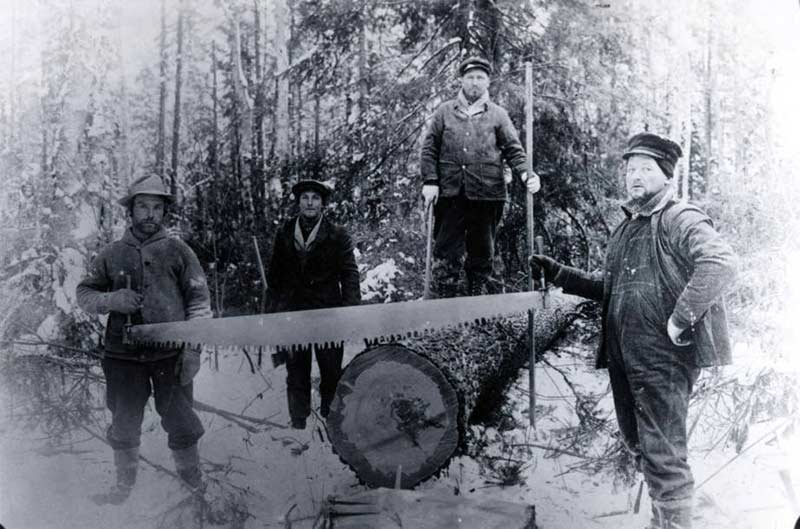
A rampant and erroneous concept in the speed community is that athletes have to run at maximum or near-maximum velocity in order to get faster. At surface level, the concept makes sense; it seems intuitive, akin to the thought that one must lift heavy in order to get stronger. But neither of these ideologies are accurate. As we know, submaximal lifts indeed can improve maximal strength. Likewise, submaximal sprints indeed can improve maximum speed.
Can athletes get faster by running fast, a la Feed the Cats? Yes, of course.
Is this the only way to improve speed? No.
Tension vs. Peacefulness
Watch the faces of the world’s greatest sprinters. More times than not, they look relaxed. Oftentimes, you’ll see jaws flopping about, that’s how loose they are. Too much tension hurts speed. Olympic lifters know this—in the Olympic lifts, athletes must alternate between tension and relaxation at very fast rates.
Too much tension hurts speed, says @KD_KyleDavey. Share on XSuch is the reality of sprinting. We call it “coordination,” referring to the synchronization of muscles turning on and off at certain points in the sprint cycle. It’s harmonious, really (or should be). The faster the hip flexors “turn off,” the faster hip flexion forces are diminished, allowing the hip extensors to pull the thigh down towards the ground more quickly and forcefully.
It’s not unlike tug-of-war. If one side suddenly lets the rope go, the rope goes flying in the other direction. When one set of muscles “let go,” the set of muscles on the other side are no longer opposed, so the leg goes flying in the other direction quickly.
The efficiency of this reciprocal inhibition is, in my mind, a key determinant of stride frequency. My brain thinks in analogies, and the image of two loggers in the 1800s cutting down a tree with a two-man saw comes to mind.
To maximize how fast the saw moves, only one side of it should be pulled at a time. If the loggers on both ends of the saw pull at the same time, obviously the speed of the blade and the efficiency of the cut will be compromised.

Point is, being overly tense hurts speed. To maximize speed, muscle groups must contract powerfully, relax rapidly, and do so at the right times. Submaximal sprints help program that.
To maximize speed, muscle groups must contract powerfully, relax rapidly, and do so at the right times, says @KD_KyleDavey. Share on XYou Want Me to Run…Peacefully?
Credit to Stu McMillan of Altis for the cue “peaceful” in relation to sprinting. He discusses this concept in the Altis Foundation course.
We met in person at the 2021 US Olympic Trials, and this concept came up in discussion. One of the athletes he was coaching was stuck in the 10.2–10.3 second range. Stu went “all-in,” as he said, on submax runs. They went several months without hitting max velocity in training.
Imagine that: a 100m sprint athlete not hitting max velocity in training for months on end. Yet, he eventually PR’d and went sub 10.1.
Stu wrote an e-book about the process. You can find it here.
I’ve had similar breakthroughs with the athletes I work with (for the record, they are mostly high school athletes and not Olympic hopefuls or Olympians like Stu trains). I record flying 10s with a Freelap system, and some athletes—not all, but some—actually PR while sprinting at what they perceive as submaximal efforts.
To be clear on this point—I’m saying that I’ve instructed athletes to run at “85-90% effort” (not 85-90% max speed, but effort) while focusing on running peacefully and fluidly, and as a result they’ve PR’d in their flying 10. In other words: they ran their fastest times ever while feeling like they were only giving 90%. Anecdotal, sure, but this serves as evidence that there’s something to the concept of running peacefully and fluidly.
I hesitate to use the word “relaxed,” because sprinting is not relaxing. It is fast and violent, yet most effective with a calm, present, and focused mind.
Sprinting is fast and violent, yet most effective with a calm, present, and focused mind, says @KD_KyleDavey. Share on XHence, peaceful.
It’s the mentality I imagine the Samurai had going into battle. I have to think they didn’t psych themselves up and ask their brethren to slap them in the face before entering a duel. Rather, I envision them as calm and methodical, yet precise, decisive, graceful, and incredibly violent with their movements when the time came to strike.
To me, this mental state is the antithesis of trying too hard. Muscling through a sprint is a great way to run slow. The Samurai approach is the path to speed.
Doesn’t make sense to you? Don’t worry, it didn’t to me at first, either.
Image 2. The great Olympian Alison Felix, beautifully demonstrating what it looks like to run fast while staying calm and peaceful.
Cueing Peacefulness
When describing the concept to athletes, I usually start with a question and a charades-like demonstration. “Which do you think is a faster way to run: running nice, smooth, and fluid…” (demonstrating these qualities) “…or, muscling your way through a sprint?” Most athletes recognize that smooth and fluid is the way to go.
After that, I’ll introduce the word “peaceful” as distinct from “relaxed.” Many athletes have been told to run relaxed; however, that word may strike an emotional response similar to lethargy in ways that “peaceful” perhaps does not. Maybe this is a matter of semantics and preference, but I feel peaceful is a different mode of operation than relaxed, and that peaceful captures the state that facilitates speed better than relaxed does.
Peaceful is a different mode of operation than relaxed, and peaceful captures the state that facilitates speed better than relaxed does, says @KD_KyleDavey. Share on XNonetheless, asking athletes to find a smooth and fluid sprint tends to work. “Clear your brain and run” works for those who are more in-tuned with their mind. All in all, though, it takes time and reps. Very few get it on rep one. It’s a difficult concept to understand cognitively, even more difficult to execute.
But when athletes do get it, there’s an “aha” moment. They feel it immediately and can tell the difference. They’ll often report the run felt smoother and more graceful. Like it felt easier. That’s the good stuff. That’s the gold. That’s the sensation athletes need to maintain during maximum efforts to truly reach their peak velocities.
Programming Submax Sprints
Metabolic purposes aside, I see two main uses for submaximal sprints:
- To create technical changes (teaching technique)
- To empower athletes to learn how to run peacefully
Although “peacefulness” is not a kinematic parameter, I do think of it as part of sprint technique. Submaximal sprinting allows athletes to focus on things other than running fast, like technique. When it is time to run at max speed, it’s definitely not time to think about how you’re doing it. The time to do that is when you’re running slowly.
When it is time to run at max speed, it’s definitely not time to think about how you’re doing it, says @KD_KyleDavey. Share on XThus, submax sprints.
Before actually sprinting, however, it can be valuable to practice the concept with drills first. I’ve found dribbles and switching drills (such as boom booms) with an emphasis on smoothness and fluidity to be a helpful primer to actually running.
The facility I work at has 63m of track, so I am constrained with what I can do with athletes. The workouts proposed below are a reflection of that. If I had more space, I would use it. Adapt for your space as you see fit.
Flying Sprints at Submax Efforts
If you have a bone to pick because flying sprints by definition mean max speed in your book…sue me. If you’re new to the term, a flying sprint is a slow build up run (not an explosive start), a short section of what is typically a maximum velocity sprint, followed by a slow, gradual deceleration. It’s a typical workout for max speed development.
In this case, it’s just as described above, but I instruct athletes to build up to a designated percentage of effort, and hold that speed through the end point (usually a cone).
I typically start by requesting 80% effort. If the film looks good and if athletes report feeling confident and comfortable, I’ll bump up in 5% increments. This style of sprinting is also conducive to working on other kinematic variables as well.

In this protocol, when you choose to ask athletes to go 100% is up to you as a coach. In my experience, athletes who are more intense and stiff—or who come across as (or actually are) angry all the time—tend to need more practice with submax sprints before the mind state starts to stick.
Athletes who are more intense and stiff tend to need more practice with submax sprints before the mind state starts to stick, says @KD_KyleDavey. Share on XMy guess is that, in general, the concept of slowing down and achieving a peaceful mind is not attractive or easily achieved psychologically for these types of people. I doubt social media and the rest of modern existence has lent itself towards freeing the mind.
When reviewing film, look for tension in the neck, face, and hands. If you see hands that are sort of floppy, that’s a sure sign that athletes are on the right track. We may not want to see floppy hands when athletes are attempting full speed sprints, but when intentionally going slow, I don’t think it’s a bad thing.
In my experience, more times than not, you will find that actual speeds are higher than athletes’ perceived effort level. For instance, I often notice athletes running at 90 or even 95%+ of their best 10m fly time during reps when they report 80 or 85% effort. I always take the time to communicate this: “You felt like you were giving 85%, but you were actually running at 95% of your top speed. That seems like a good thing, right? Imagine what will happen when you master this smoothness during your actual 100% effort!”
Alternatively, you may challenge your athletes to hit a certain time that you have predetermined (say, 85 or 90% of their PR). I first heard this concept from Sam Portland when he appeared on episode 141 on the Just Fly Performance Podcast. He calls it speed gate golf: challenging athletes to hit certain times as opposed to percent efforts.
Again, in my experience, when athletes get the peaceful concept down, they report lower perceived effort than expected from their times. In other words, they’ll feel like they’re giving 70% effort while hitting 85% of their max speed.
Maybe the relationship between perceived effort and actual speed isn’t 1:1, so perhaps it’s to be expected that these won’t match up. I’m open to that. But honestly, if it boosts athletes’ confidence and provides enhanced expectancies (a la Gabriele Wulf), I’m OK with it and will continue wielding that language to their advantage.
Alternating Flying Sprints
Alternating between a submax and a maximal sprint gives athletes the opportunity to first feel the smooth, fluid, peaceful run and then to incorporate that into an actual full speed effort. I use this method with athletes who seem to have the concept down—they are beyond the learning stage and now need practice incorporating the technique into their “normal.”
Pro tip: film, film, film. Compare the submax to the maximal sprint. They should look the same: beautiful. If technique goes to hell when an athlete puts the pedal to the metal, they may not be ready to give 100% effort yet and may need more time at submax speeds to hone technique.
One athlete I work with improved his flying 10 PR from 1.01s to 0.97s (22.15mph to 23.06mph) using this method. That’s a pretty big jump, and he did it, in my opinion, by finding that peacefulness and fluidity.
In and Outs
I’ve also heard them called floating sprints or re-accelerations, but Al Vermeil calls them in and outs, so I tend to call them that, too.
An in and out is a maximal sprint for X distance, a maintenance sprint by which speed doesn’t change (think cruise control) for X distance, then full speed to the end.
On my 63m track, I usually do a 10m sprint, 20m “float” or cruise control, then a 15m sprint. On a full track, you may do a 15–20m initial sprint, a longer float phase—say, 40–60m—followed by a 20–30m full speed sprint to the finish.
This is also reserved for athletes who have the basic concept down. The goal is to achieve the smoothness going into the float phase, hold it, then maintain as the athlete begins accelerating again towards max speed.
Elastic vs. Strength-Based Athletes: Does it Matter?
The athlete who went from a 1.01 to a .97s flying 10 is highly elastic. The kid hasn’t touched a weight in years (don’t ask). He’s one of those naturally gifted athletes who can pogo through the roof. He’s also highly competitive, so he got down on himself and tried harder when his flying 10 time wasn’t what he wanted. As a result of trying harder, he ran slower, spiraling him into a downward cycle of trying harder, running slower, trying harder, running slower.
For him, I think trying harder meant muscling it more.
Yet, when he released himself from that mentality and ran peacefully, his time dropped significantly. This makes me wonder: do elastic athletes respond better to this type of focus than strength-based athletes do?
I do think that even strength-based (as opposed to elastic) sprinters are at their fastest when they find that peacefulness, based on the physiological rationale presented earlier regarding stride frequency. But I wonder if elastic athletes have more to gain from finding that rhythm than their strength-based counterparts.
In other words, maybe muscling it holds an elastic sprinter back more than it would a strength-based one. If that’s true—and I don’t know if it is—then maybe it warrants spending more time working this concept with elastic athletes.
Maybe muscling it holds an elastic sprinter back more than it would a strength-based one, says @KD_KyleDavey. Share on XRunning Slow to Run Fast
I reject the notion that athletes have to sprint maximally or near maximally to get faster. Not only are submaximal sprints excellent avenues by which to make technical changes, they are also highly appropriate for learning, understanding, internalizing, and then realizing the necessary mind state to reach one’s true maximum velocity potential.
Since you’re here…
…we have a small favor to ask. More people are reading SimpliFaster than ever, and each week we bring you compelling content from coaches, sport scientists, and physiotherapists who are devoted to building better athletes. Please take a moment to share the articles on social media, engage the authors with questions and comments below, and link to articles when appropriate if you have a blog or participate on forums of related topics. — SF

